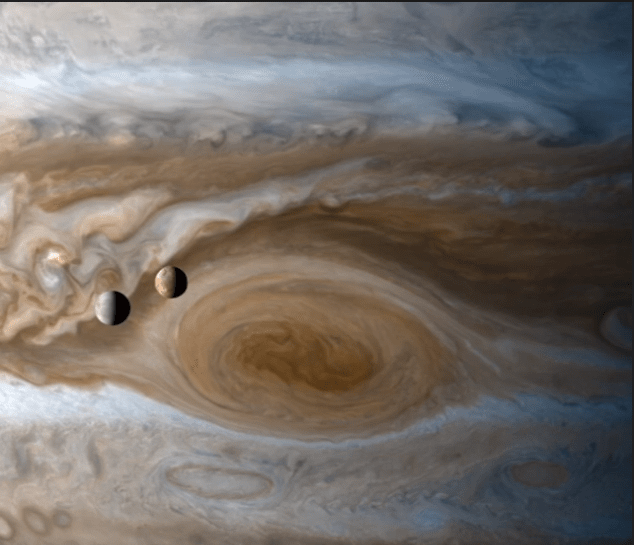Jupiter is a stunning planet to observe. Whether it be visible light or any other wavelength. In a stunning new image released by the University of California -Berkley, Jupiter is seen in ultraviolet light. The familiar Great Red Spot appears as a blue oval as do many of the familiar belt features. Around the polar regions are revealed a brown haze which is thought to be caused by a high altitude vortex mixing up the atmosphere. The jury is still out on the mechanism behind this though but it may be an interaction between Jupiter’s strong magnetic field which pierces the atmosphere near the poles.
Jupiter is the largest planet in the Solar System, a gas giant with powerful storms. With a diameter of 143,000 km, Jupiter is 11 times wider than Earth and capable of swallowing all of the other planets in the Solar System and still have room to spare. It is composed or hydrogen and helium and lacks a solid surface. It’s atmosphere has bands of alternating colour with strong winds, hurricanes and lightning storms. The Great Red Spot is one of its most well known features, a hurricane system three times the size of Earth. It’s also home to a family of satellites including the four well known Galilean moons Io, Europa, Ganymede and Callisto.

The atmosphere of Jupiter is a complex system of thick clouds, storms and high winds. The hydrogen makes up about 90% of the atmosphere with helium the bulk of the remainder plus trace amounts of methane, water vapour and other compounds. The belts in the atmosphere appear to alternate between lighter and darker colours driven by different temperatures, chemical compositions and wind speeds that reach up to 640 km/hr. Lower down, beneath the visible layer, the atmosphere becomes denser, hotter and eventually becomes fluid. Other phenomenon have been observed from lightning storms, aurora and ice crystal clouds.

The newly released ultraviolet image reveals strange features around the polar regions. The oval shaped features are Earth-sized and only visible in the ultraviolet wavelengths. The ovals seems to consistently appear at a slightly lower latitude than the auroral zones around the poles. In the image, the ovals seem dark in colour due to absorption of ultraviolet radiation, more so than the brighter surrounding regions.
The Hubble Space Telescope orbits Earth at an altitude of 540 km and takes yearly images of Jupiter and the other planets. Hubble was the first telescope to capture the so called UV ovals and they have since been detected by the Cassini spacecraft. The team at UC Berkeley discovered that the ovals were more common around the south pole (appearing in 75% of images around south pole and only 12% around north pole.)

The team spoke with planetary atmospherics experts Tom Stallard (Northumbria University in UK) and Xi Zhang (from UC Santa Cruz) to try and understand the mechanism. They theorise that Jupiter’s strong magnetic field lines experience friction in the ionosphere leading to the establishment of a vortex (a rotating, spinning flow of fluid or air.) It is the vortex that drives the dark ovals.
Source : Magnetic tornado is stirring up the haze at Jupiter’s poles
The post Magnetic Tornado is Stirring up the Haze at Jupiter’s Poles appeared first on Universe Today.
No comments:
Post a Comment